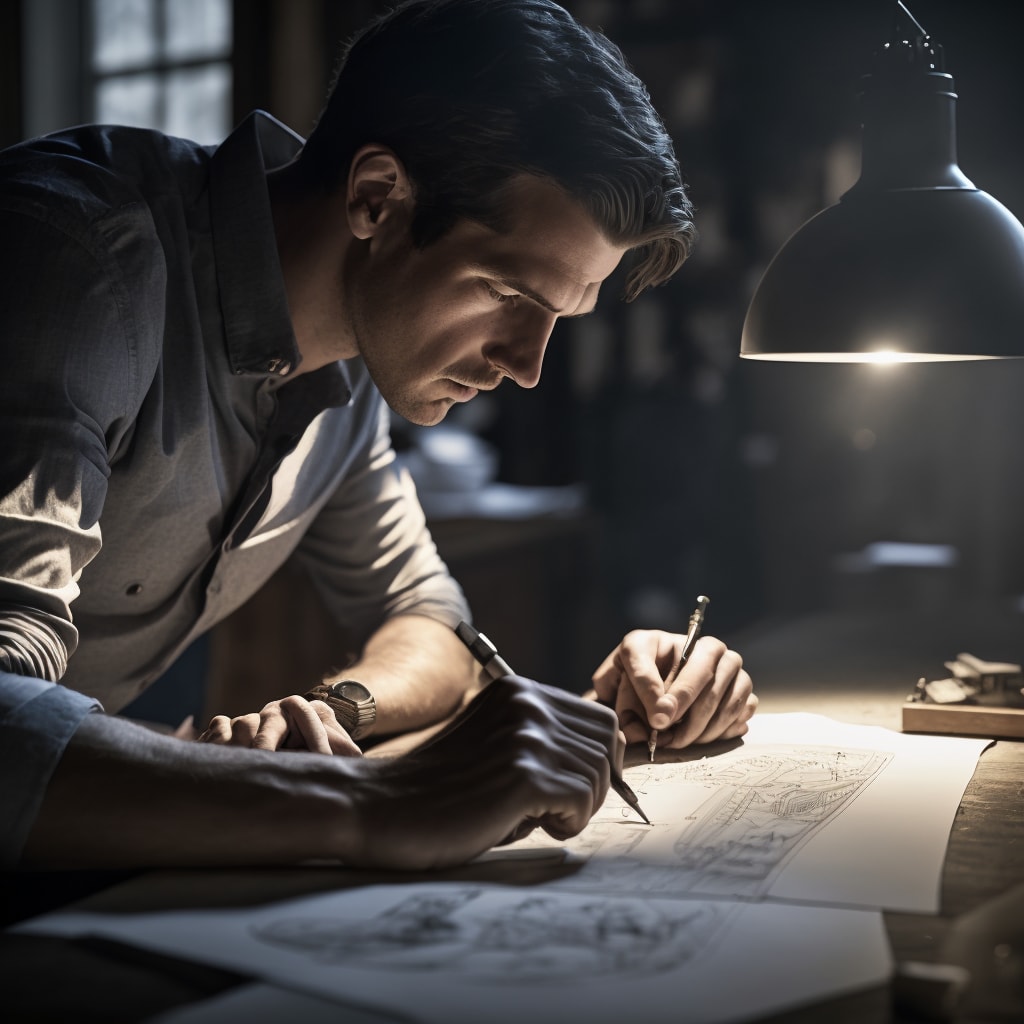As AI generated creations (both images and “articles”) begin to flood the internet, there has been a lot of curiosity about a) how exactly the process of AI art prompts work, and b) how this present wave of AI art is affecting the income streams and careers of professional artists. Given all the hype, we might be interested in asking: Just How is AI Art Made?
Let’s take those 2 in order. First:
How is AI Art Made, exactly? One Possible Recipe.
The following AI Art prompt, process and images are the creation of human artist and AI-tool user PhilippEarth, aka @AI.and.Art. You can purchase actual physical prints of his most excellent artworks here.



This step can be fortuitous, as in, when you type in a prompt “monkey completing a crossword” and BOOM, first try, you get just exactly what you were looking for (spookily, I find this happening more and more often. Is the AI actually learning, or am I learning how to write better prompts the first time out? Most probably a bit of both). But more often than not, you need to tune your prompt in order to coax the AI into delivering something akin to what’s in your mind’s eye, waiting to be birthed. This fiddling with the prompt is what has become known as “promptcraft”… and it is, as implied, a learned artform, with all kinds of tricks.

In the process of tuning your prompt, the AI has generated many many images for you. In the case of MidJourney, at least 4 per button push. And then you can “re-roll”, in other words, ask the machine to generate four more images based on the same prompt — this works, because, unlike a normal computer program (and very much like a human), the AI will never make the same image twice. In fact, it often makes radical departures from the core idea you were aiming at… what one might actually conceive of as “creative improvisation”

This is where you can fine tune a prompt to develop individual components of your image, in detail, that you can copy, paste, and combine later in your image editor. This is now very similar to how many professional photo-illustrators work today. Take 100 (or 1,000, or even 5,000) shots, then “fix it in post”. See next step.

Yep. Our tried & true go-to tool of yore, Adobe PhotoShop. Personally, these days, I am delighted with a leaner meaner cheaper tool: Pixelmator Pro for MacOS. But whatever flavor suits your needs, and skillset. The point is that in this stage, the artist uses traditional image editing software to combine the “selects” of all the source images into a perfect masterpiece. Just like we’ve done for the past 25 years.

Again, traditional digital image editing, aka “wire removal”, aka “cleanup.” Back in the day, we used to call this “airbrushing.” These days, it’s called ‘shopping it. (as in, Photoshopping). So after you’re done, your image has been ‘shopped.

And this step, is called, simply: Digital Photo-illustration. Basically, add in the parts of the image that are either simpler to create manually, or that the AI utterly refused to render for you even after repeated prompting. (she’s stubborn that way sometimes, believe me)

This part always amuses me. Because the actual nature of Ai art is, you start with the title of the piece. We call it the prompt. And there is some wonderful power and poetry in what the actual literal prompt was that finally generated your key image. But what is often even funnier, is distilling the essence of that prompt into a simple phrase… a more clever, less technical title. And therein lies the rub.
Thanks again to PhilippEarth, aka @AI.and.Art for making all these tutorial images in the first place. You can visit his art store here.
And now, back to our regularly scheduled programming:
Is AI a Threat to Professional Human Artists, Illustrators, and Photographers?
I am not totally prepared to answer that second question fully yet, but I will do my best with a few rapid insights.
Yes, professionals should be concerned — the AI will undoubtedly compete directly with you for commercial illustration / photography budget dollars (and/or drive your prices down into poverty levels), and… well, there are a couple of possible solutions:
1) if you can’t beat ’em, join em. Commercial artists, start spinning down your PhotoShop, and start spinning up Discord (MidJourney). Realise that this is another seriously disruptive tool for your industry. Adapt as well as you can. And realise that production speed expectations have just amped up an order of magnitude or so.
2) cultivate your relationships with your patrons / fans / followers / clients. Make a special case to them that you are a human creative. Let them see your creative process (which a machine cannot really do, other than a simple “fade up from fractal” timelapse). Genuinely cultivate relationships with your audience… tell the story of how you created a piece, and really put your process on display. Be present in the physical world… at galleries, at fairs, at shows. No, this isn’t the method of the great masters of old… but yes, it highlights the key distinction between human and AI art creators. So exploit it.
3) find another career. Quickly.

